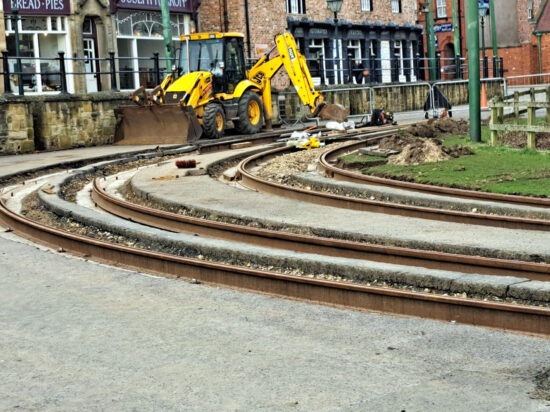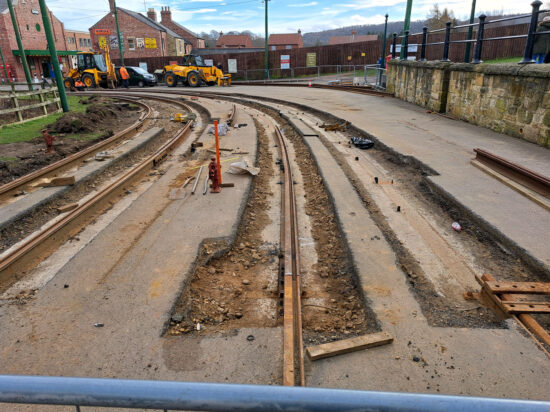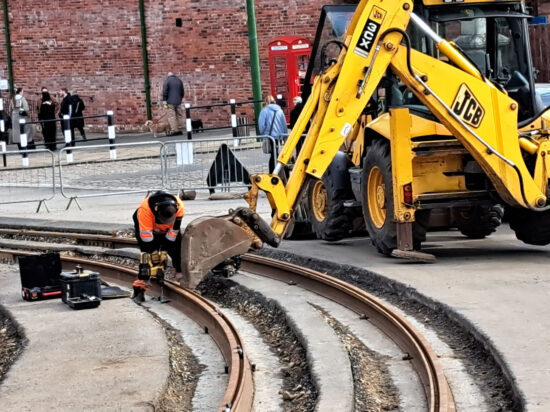With the tramway at Beamish have been closed since the start of January this has allowed a concerted effort to be made on various maintenance jobs to take place. This has included some major rail replacement works at the east end of the 1900s town to be undertaken, which is the main feature of this article thanks to photos from Gordon Bulmer.
In the early season Beamish is only open Wednesday to Sundays (except for during local school holidays) which also helps some of the major maintenance jobs to be completed without disrupting those visiting the museum too much. The rail replacement at the east end of the town is a big job and has involved closing the road to all through traffic – not only trams but also the buses with the rubber tyred vehicles taking a diverted route from the 1950s town and access roads instead.
Recent progress on the track here has seen the curved rails manipulated into shape and then laid. Once down they will be bonded and tested before the final tarmac surface is put down ahead for the Easter holidays, at which time the tramway should start operating again.
Its not only track which is being worked on either as a contractor has also been on site working on various aspects of the overhead line equipment. This will allow the internal team at Beamish to carry out some other work themselves (including replacing span wires and strain insulators), although a further contractor may also be brought in to help speed up the completion of this work.
There has been further work taking place in the tram depot to improve the environment there too. New lighting has been fitted in the inspection pit along with a repaint in lighter colours which makes a brighter working environment. A new gantry is also to be installed to make it easier to inspect the roofs of tramcars.

A view of the trackwork looking towards the 1900s town from the edges of the new 1950s town. This shows the new track having been put into place.



When will it be finished?
Best estimate is stated in the article you have replied to… 🙂
Forcing rail into place under tension and bolting it down to a bit of concrete doesn’t strike me as a good way to lay tram track. I remember Pleasuee Beach loop in Blackpool receiving similar brute force from a JCB to bend a long welded rail round into a curve. Thing is, when it come to be replaced again they didn’t know how / forgot how it had been laid and it gave them quite a shock when they cut through it and released the tension!
Shouldn’t there either be a solid concrete pad for both rails or at the very least sleepers and tie-bars? How is it supposed to hold to gauge if one rail isn’t solidly connected to the other?
I think they know what they are doing. Track laying has moved on a lot in recent years.